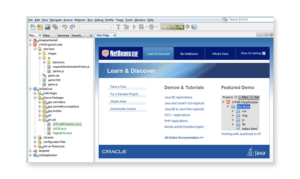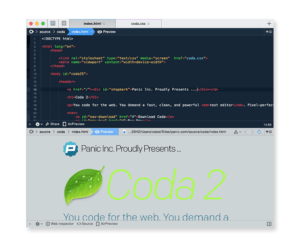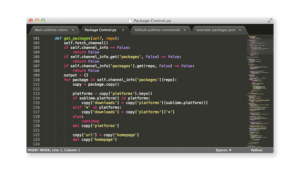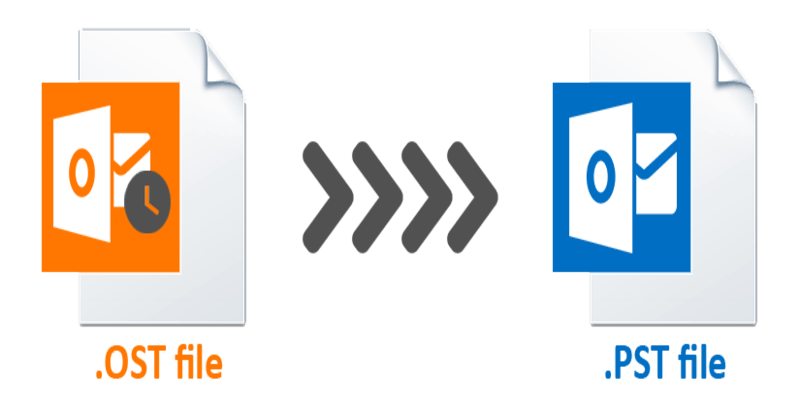Developing a website with WordPress is much easier when all the right tools are available there to get the job done right. But unfortunately, finding the best IDE for WordPress web development sometimes feels like looking for a needle in a haystack.
Fortunately, if you have the idea of the essential features you want, can help you choose the right IDE. By reducing the available options to ones that will suit your whole team and support all the languages, you can find the right IDEs for your project.
In this post, we’ll learn
- What is IDE?
- Features of IDE.
- How are IDEs beneficial?
- And, then proceed to the best IDEs available for WordPress Development.
So, Let’s get started!
What is the IDEs (Integrated Development Environment)?
According to Wikipedia, IDE or Integrated Development Environment is defined as
“An integrated development environment (IDE) is a software application that offers comprehensive facilities to computer programmers for developing software and websites. It normally includes a source code editor, build automation tools, and a debugger.”
Breaking this down means that IDE is a programming environment that can be used to develop software with no need of leaving the interface.
Unlike most editors, an IDE usually supports the whole project rather than keeping a single source code file. Even if an editor can edit more than one file, it may not help to build a project file that contains a complete folder full of files, unitedly with settings particular to that project.
What are the features that you’ll find in IDE?
Choosing the right IDE entirely depends on the features you’re looking for. But, there are some features that you can expect to see in a full IDE, and it could include the following:
- Multiple language support (PHP, JS, CSS, HTML)
- Debugger
- Refactoring
- Linting
- Build automation
- Code sniffing
- Code highlight
- Compiler
- SVN/Git integration
- Interpreter
- Code completion
- Database Management/Editing
How are IDEs beneficial?
IDEs are great for controlling how your software is developed. You can fix compiler flags, store multiple configurations, and more.
Let’s explore the benefits of IDE in brief:
- Build software applications, drivers, and utilities.
- Allows software development in any programming language without wasting more time on language syntax.
- Able to correct syntaxes, warn about memory leaks, help in writing quality code, etc.
- Increases efficiency in coding faster with less effort and its features help in arranging resources, avoiding mistakes, and providing shortcuts.
- Supports collaboration where a group of programmers can work together quickly within an IDE.
- Translate code from high-level languages to the object code of the targeted platform at the compile or build stage.
- While building applications, IDE manages resources such as header files, library files, and more at specified locations.
- Eases the creation of database applications.
- Includes pre-installed libraries for a particular programming language.
- Makes development easier by utilizing syntax highlight features.
- Provide services to sort, search, retrieve, and process data in a database.
- Keep track of the code, create code, and allow searching.
Now, let’s dive into the best IDEs for WordPress Development:
-
PhpStorm

PhpStorm is a popular IDE from JetBrains, and it owns an impressive array of out-of-the-box features. One best parts of PhpStorm is its support for WordPress development without any add-ons. It automatically detects if your existing web project is WordPress-based. Also, it has a built-in WordPress Plugin project type to help you in getting started on developing plugins quickly.
With WordPress support in your project, you have complete access to code completion for all the built-in WordPress functions, plus action & filter hook code completion! You can quickly jump to function definitions and particular parts’ usages, which is quite helpful.
PhpStorm provides the best WordPress support out of all the IDEs discussed in the blog.
Operating System
- Microsoft Windows
- Mac OS X
- Linux
Pros
👍 Code completion of hooks
👍 Navigate to any hook
👍 Search on WordPress.org
👍 Deep JavaScript and React support
👍 Define code styles for languages you’re developing with
👍 PHP Code Sniffer integration
Cons
👎 Pricey
👎 Slow with large codebases (code intelligence features require indexing the whole codebase)
👎 The interface can seem cluttered.
PhpStorm Details:
- Website: https://www.jetbrains.com/phpstorm/
- Commercial: Yes (Free 30-day trial available)
- Initial Release: 2009
- Regularly Updated: Yes
- Written In: Java
- Extensions Supported: Yes – Plugins
- Cross-platform Support: Yes
-
Coda 2

Coda was first introduced in 2007. It’s had a strong following over the years, sharing much of the professional WordPress web development market with Sublime Text on Mac networks.
It is the main drawback of Coda—even ten years after the initial release, there’s no Windows version available to date. It is the only editor in this list that isn’t cross-platform compatible.
It’s relatively rare today to find web development apps that are Mac (or Windows) only. It would be a shame, though, as it’s a good editor.
Its features include a built-in terminal and source control client, as well as MySQL editor and FTP client.
Additionally, it supports plugins to increase functionality, including plugins specific to WordPress development. However, it’s not clear how regularly these WordPress add-ons are getting updated.
Operating System
- Mac
Pros
👍Simple to use
👍Moving cards between columns is very responsive.
👍Beautiful to look at
👍Great for collaboration
👍Highly functional
👍Easy to learn and use
Cons
👎Very light native integrations
👎No concept of velocity
👎Can be a little too flexible
👎 Tough to manage large projects
👎 Light on features
Coda 2 Details:
- Website: [https://panic.com/coda/]
- Commercial: Yes (Free 7 day trial)
- Initial Release: 2007
- Extensions Supported: Yes – Plugins
- Regularly Updated: Yes
- Written In: (Unknown)
- Cross-platform Support: No
-
NetBeans

NetBeans has been in the market (since the mid-1990s) but is still growing and giving completion to newer IDEs. Like PhpStorm, it’s Java-based and available for various platforms.
The core NetBeans application comprises a set of ‘modules’ to include features to the IDE to support WordPress web development.
The IDE is a favorite among developers for many years as it’s one of the most fully-featured IDEs available in the market.
Its main competition during this time was from apps such as Dreamweaver, which is still in active development by Adobe but is not that much popular as it was earlier.
NetBeans goes well with WordPress projects. You get the general code hinting and highlighting, plus full code navigation, but you also get a robust debugger, and that’s very impressive for a 100% free product.
Operating System
- Microsoft Windows
- Linux
Pros
👍 Supports a large number of Java applications like J2SE and EJB.
👍 Easy to install
👍 Free & open source
👍 Detect errors quickly.
👍 Has utility for different add-ons to create web services.
Cons
👎 Options for code conversion in other source languages.
👎 Problems in code execution time & start time.
👎 Limited Import code option.
👎 The debugger is less efficient.
NetBeans Details:
- Website: https://netbeans.org/
- Commercial: No (Free)
- Initial Release: 1996 (original name Xelfi)
- Regularly Updated: Yes
- Extensions Supported: Yes – Modules
- Written In: Java
- Cross-platform Support: Yes
-
Sublime Text 3

And the last on my list is Sublime Text 3, developed by Jon Skinner. It’s considered the best choice among IDEs for WordPress development professionals. Over the years, it has developed a notable following with its powerful, slick, plus high-speed user interface. It is also well known for being very stable and handling huge files with ease whereas other editors have struggled to do this.
On startup, this IDE is speedy to launch. It’s almost instantaneous. It works very fast too, with no glitches or lags, which makes for a very smooth plus rich editing experience. Somewhat, it’s minimalist out of the box and features a package administrator to install add-ons (written in Python) with no need to restart Sublime Text in most cases and that’s very good.
Operating System
- Microsoft Windows
- Linux
- Mac
Pros
👍 Identifies the code of the different vendors within the text.
👍 Easy to use and gives many preferences that suit all users’ requirements.
👍 Manipulating text is easy plus efficient.
👍 The ability to add package controls.
👍 Freely evaluate the app.
Cons
👎Less & complicated plugins.
👎 Formatting a large document file can be confusing.
👎Often prompts to buy a new version.
👎 No auto-saving a document.
👎 Cannot highlight a specific portion of text.
Sublime Text 3 Details:
- Website: https://www.sublimetext.com/
- Commercial: Free to evaluate (license required for continued use)
- Initial Release: 2008
- Regularly Updated: No
- Extensions Supported: Yes – Packages
- Written In: C++, Python
- Cross-platform Support: Yes
Concluding Thoughts
In this blog, I’ve discussed the significant editors/IDEs for WordPress web development that caters to your particular needs. If you want to have a ‘lite’ editor experience, then use Coda 2, Atom, or Sublime Text 3. You can configure them only to add the features you need more.
Though, I am not denying PhpStorm is not good—it’s impressive. But it’s not the IDE whose functionality would need all that functionality right away.
Well, I have shared all the essential information about the five IDEs. It would help you in making the right decision.
Presently, many IDEs for WordPress development companies in India are working on these IDEs. If you need any assistance, then you can contact them and get your queries sorted.








